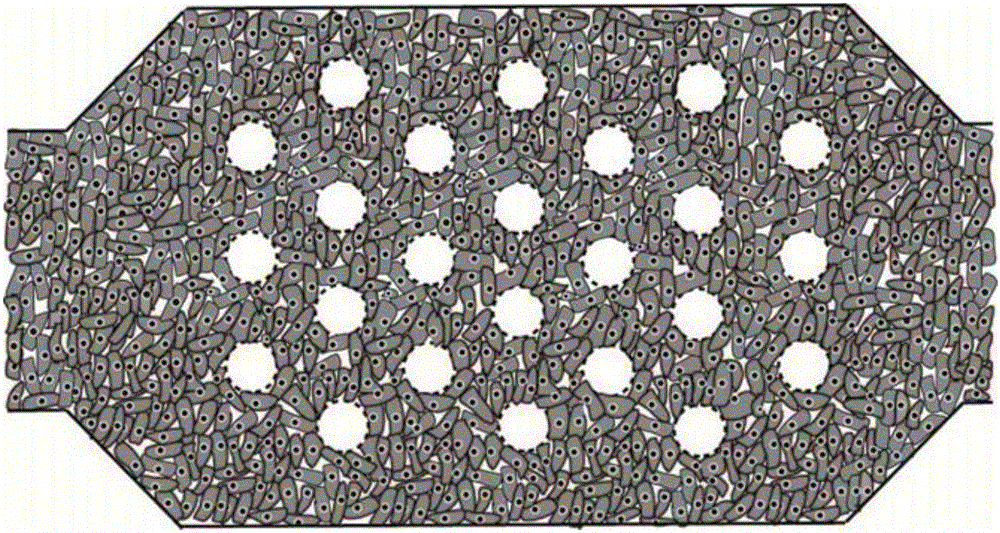Device and method for patterning co-culture of multiple cells
A technology of cell patterning and cell culture, which is applied in the field of cell culture, can solve the problems of environment, equipment and experimenters with high requirements, difficulty in obtaining, and limitation of cell patterning experiments, so as to facilitate cell growth, reduce requirements, and break through light Engraving the effect of technological limitations
- Summary
- Abstract
- Description
- Claims
- Application Information
AI Technical Summary
Problems solved by technology
Method used
Image
Examples
Embodiment Construction
[0026] In order to make the technical problems, technical solutions and advantages to be solved by the present invention clearer, the following will describe in detail with reference to the drawings and specific embodiments.
[0027] Such as figure 1 As shown in ‐2, a device for patterned co-cultivation of various cells is provided, including: polydimethylsiloxane printing and cell culture dish or culture plate base; punching holes on the adhesive tape to form micron-scale The array of holes is used as a template, and polydimethylsiloxane is directly poured on the template to obtain a channel with an array of micron-scale pillars inside, and the tape is peeled off to form the polydimethylsiloxane print, and the pillars The diameter is 100-800 μm; the polydimethylsiloxane stamp is placed on the cell culture dish or culture plate base; the substrate surface of the cell culture dish or culture plate base is not treated, or a layer of Rat tail collagen enables cells to adhere and...
PUM
| Property | Measurement | Unit |
|---|---|---|
| diameter | aaaaa | aaaaa |
| height | aaaaa | aaaaa |
Abstract
Description
Claims
Application Information
 Login to View More
Login to View More - R&D
- Intellectual Property
- Life Sciences
- Materials
- Tech Scout
- Unparalleled Data Quality
- Higher Quality Content
- 60% Fewer Hallucinations
Browse by: Latest US Patents, China's latest patents, Technical Efficacy Thesaurus, Application Domain, Technology Topic, Popular Technical Reports.
© 2025 PatSnap. All rights reserved.Legal|Privacy policy|Modern Slavery Act Transparency Statement|Sitemap|About US| Contact US: help@patsnap.com



